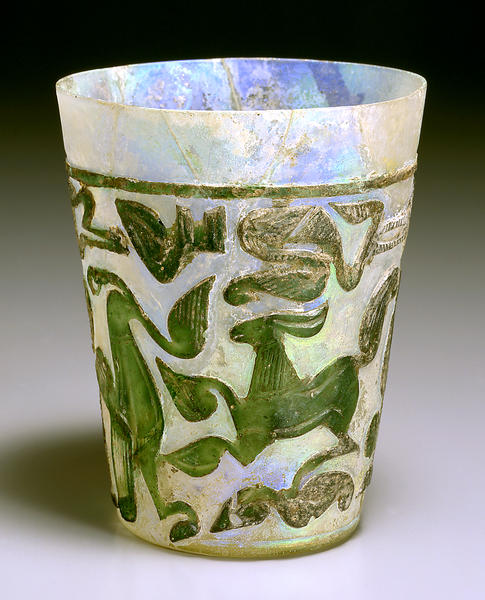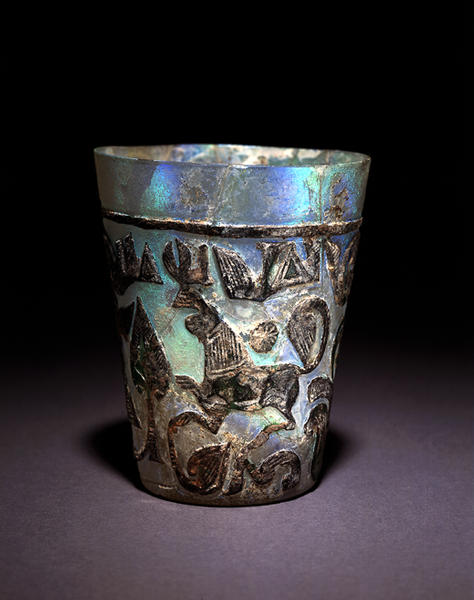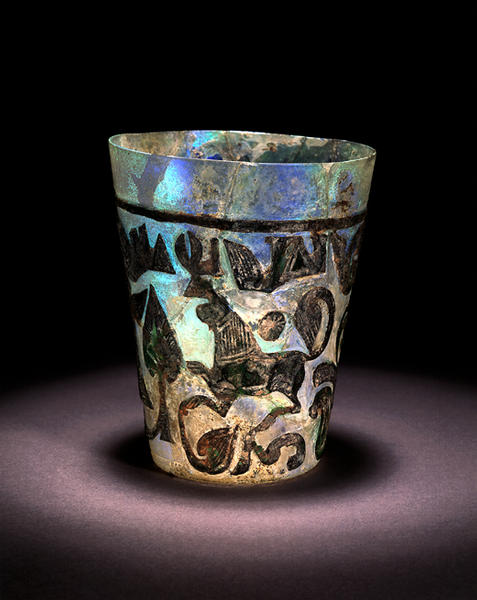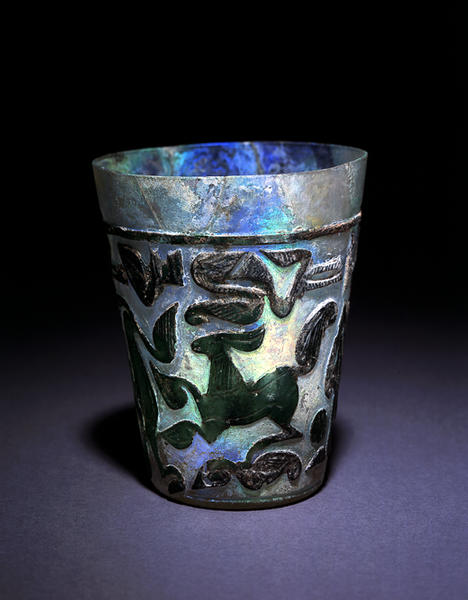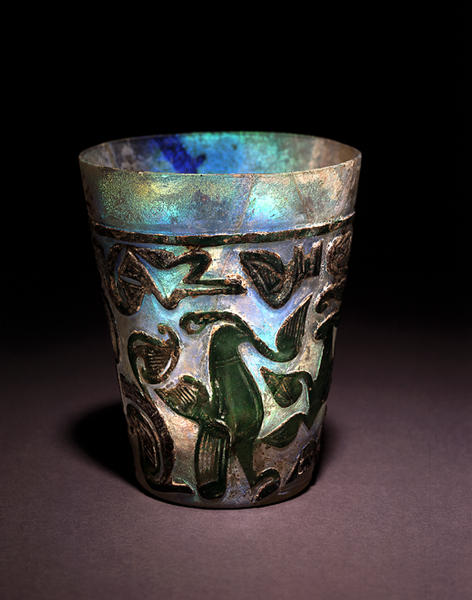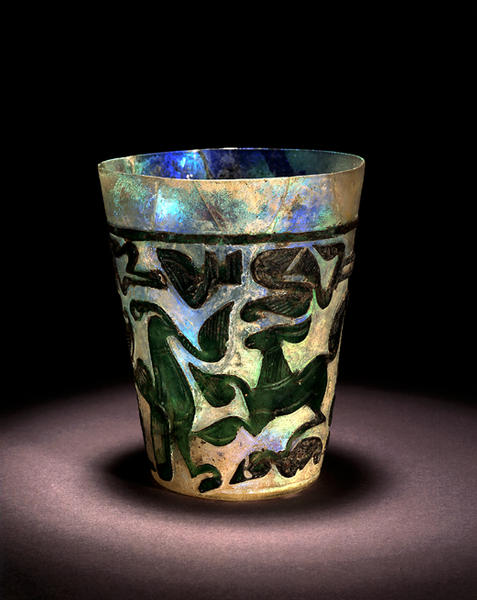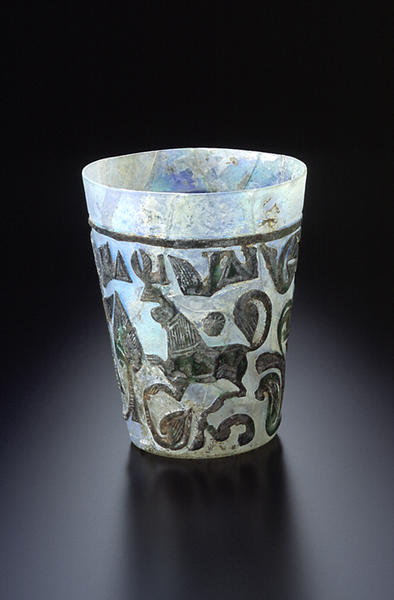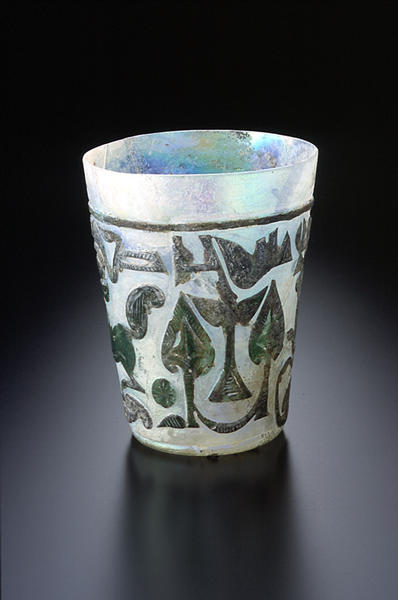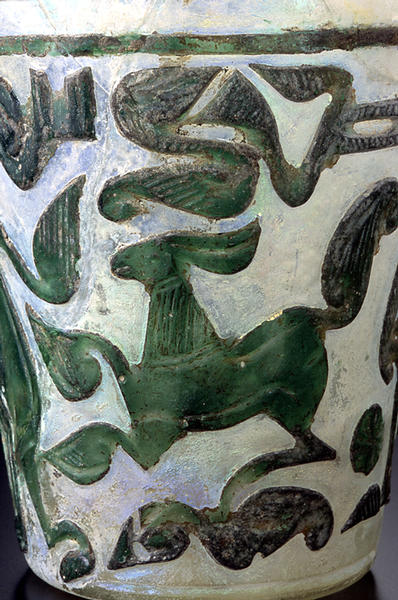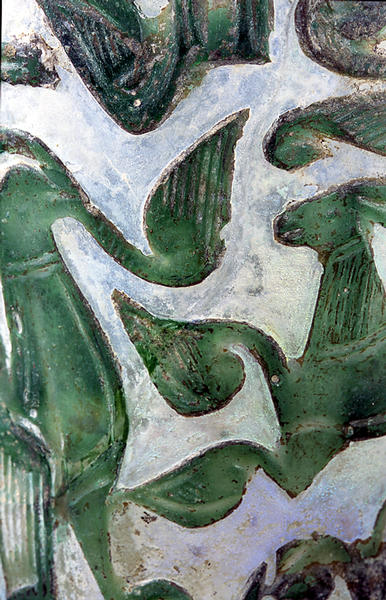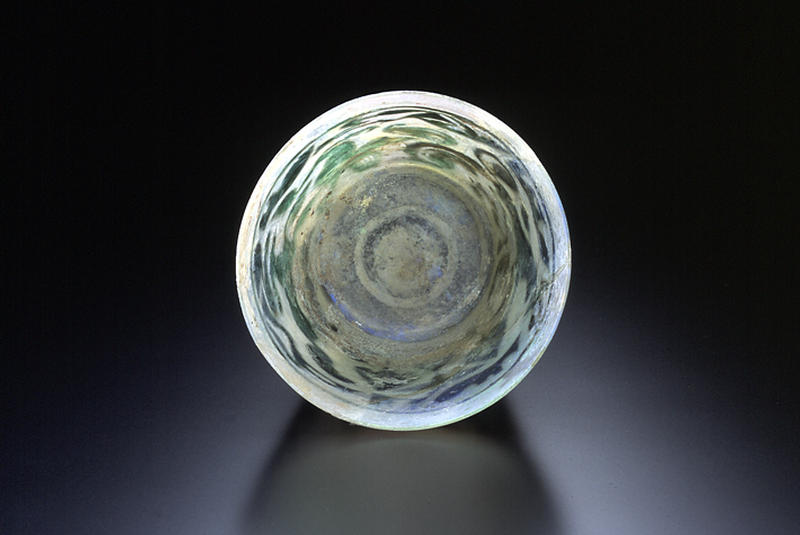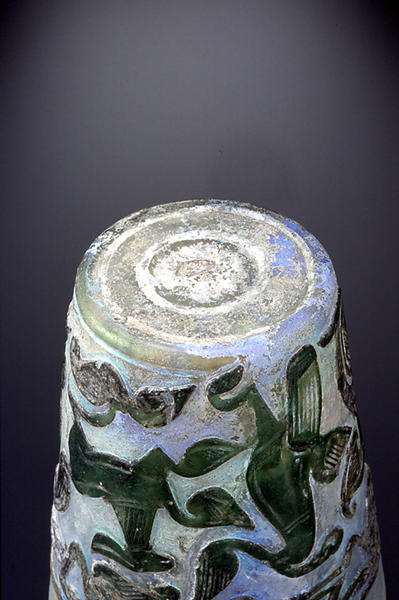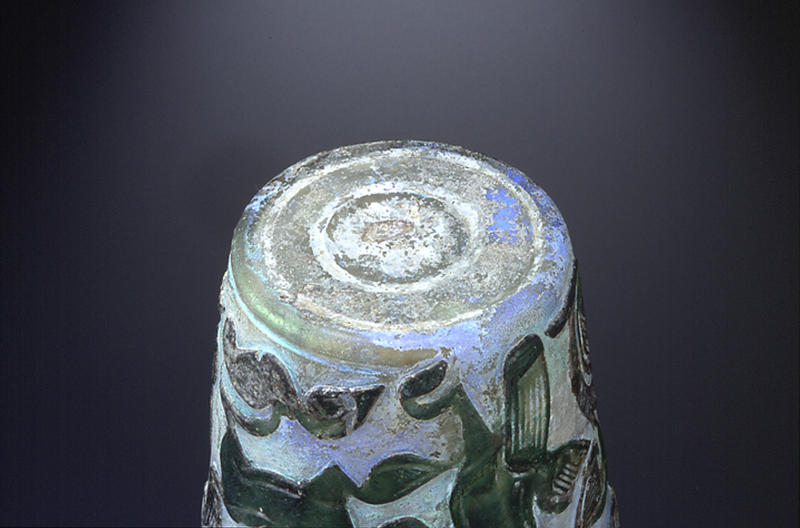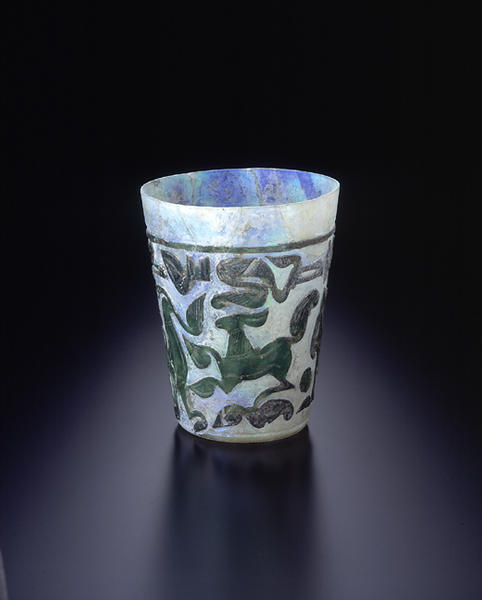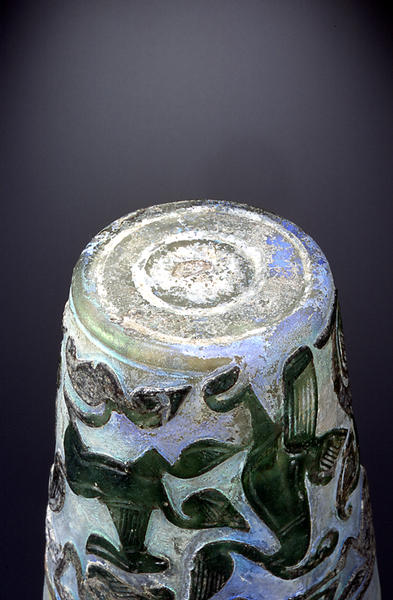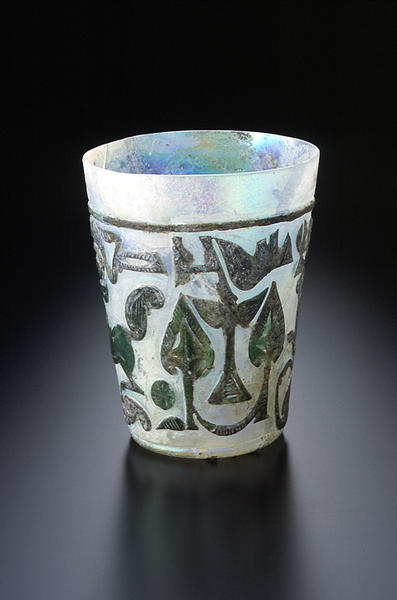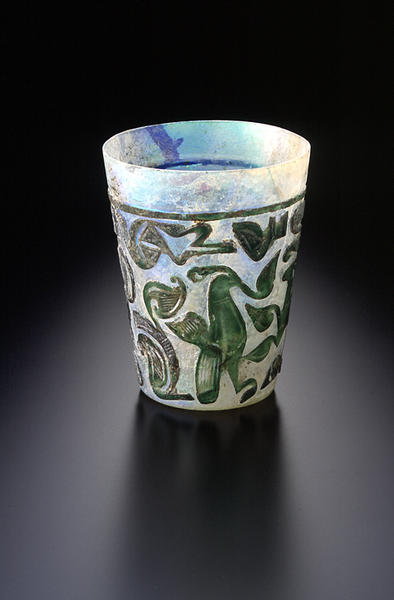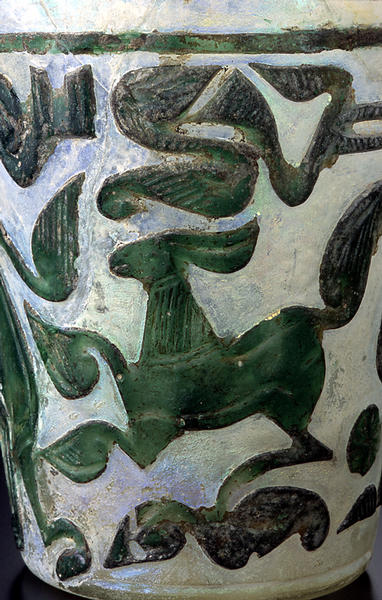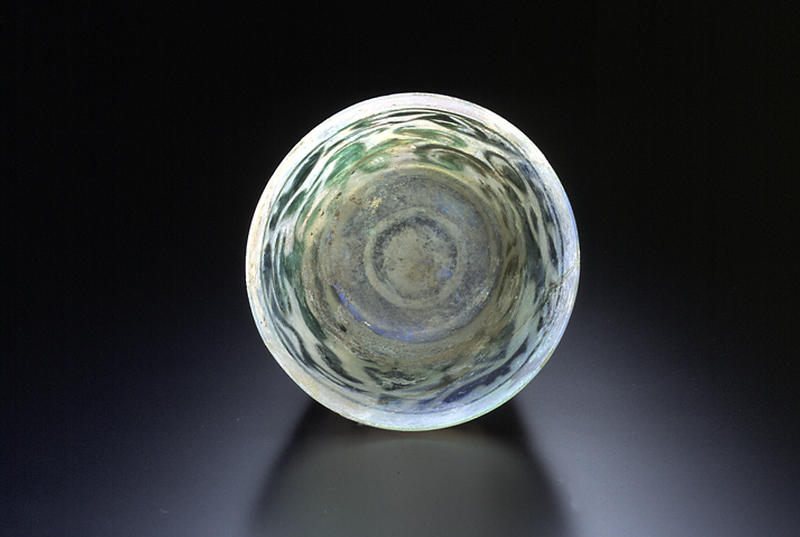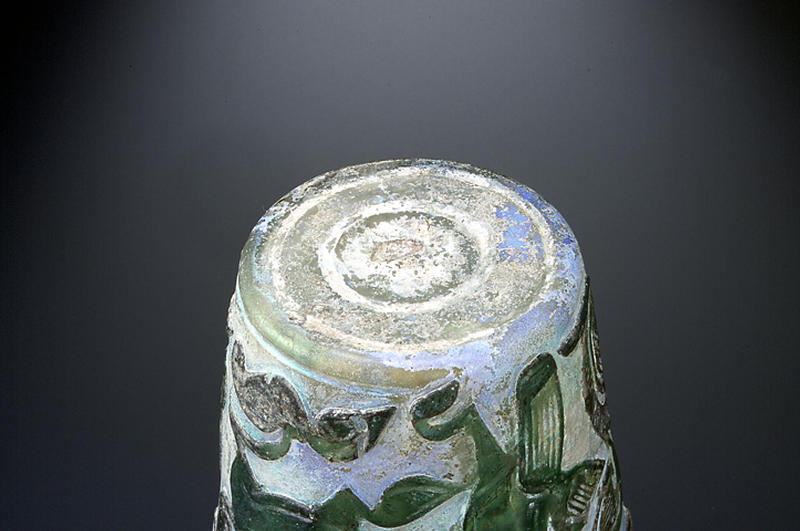Cup with Cameo Decoration
- Probably Iran
- 9th - 10th century
- Glass
- H-13.8
Catalogue Entry
Colorless translucent glass is covered with green semi-translucent glass. The glass was then blown and molded to form, and the decorative pattern was then shaved away form the surface layer. The pattern includes: a single band of green which circles the cup just beneath the edge of the mouth . Below this green band, two deer, one bird, two trees and some other plants have been transformed into arabesque-like abstract motifs. There are diagonal lines and other contour lines carved into these patterns, and these lines, combined with the change in the green glass coloration gives the design a three-dimensional sense. Two layers of circles have been carved out of the base and there is a bump in the center of the base which is thought to be a pontil mark. The carved birds, plants and animals have a lively sense of vibrancy and reflect off the beautifully iridescent ground area, which today appears white.
Catalogue Entry
Cup with Cameo Decoration
Iran (probably), 9th-10th centuries
Glass
H. 13.8cm
Miho Museum, Shiga
Green glass was layered onto clear glass and then blown into the desired shape. The cup was then rotated with a wheel and cut-work relief, or so-called cameo designs, were created on its surface. The designs are a single rope circling beneath the mouth rim area, with a row of script-like design beneath, further down a beast of prey, a bird and a cedar-like tree, all linked by arabesque designs. There are internal cuts in the green glass designs, and this gives the designs a three-dimensional feel. The base is surrounded by a double layer of circular cuts, and the center has the depression of a pontil mark. The outer surface of the transparent glass is completely covered with a bluish green weathering.
